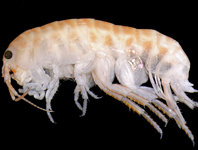Abstract
We describe the first two Blattodea from the early Eocene Palana Formation of the Gurha opencast lignite mine, western Rajasthan, India. Although it is not possible to attribute them to a precise family, these large wings suggest a warm and humid paleoclimate for the area at that time.
References
Arya, R., Sahni, N. & Loyal, R.S. (2005) Molluscan and insect remains from the type Kasauli Formation and their significance. Journal of the Palaeontological Society of India, 50, 115–120.
Engel, M.S. & Pérez-de La Fuente, R. (2012) A new species of roach from the Jurassic of India (Blattaria: Mesoblattinidae). Journal of the Kansas Entomological Society, 85, 1–4.
https://doi.org/10.2317/JKES110524.1
Fletcher, T.B. (1920) Indian fossil insects. Scientific Reports of the Agricultural Research Institute, Proceedings of the third Entomological Meeting at Pusa, 3, 983–990.
Dutt, A.B. (1977) Rajharablatta laskarii, a new Lower Gondwana fossil insect from Daltongunj Coalfield, Bihar. Records of the Geological Survey of India, 108, 167–169.
Hislop, S. (1860) On the Tertiary deposits, associated with trap-rock, in the East Indies: with descriptions of the fossil shells, by the Rev. S. Hislop; and of the fossil insects, by Andrew Murray, Esq., F.R.S.E.; and a note on the fossil Cypridae, by T. Rupert Jones, Esq., F.G.S. Quarterly Journal of the Geological Society, 16, 154–166.
https://doi.org/10.1144/GSL.JGS.1860.016.01-02.22
Hislop, S. & Hunter, R. (1855) On the geology and fossils of the neighbourhood of Nágpur, Central India. Quarterly Journal of the Geological Society, 11, 345–383.
https://doi.org/10.1144/GSL.JGS.1855.011.01-02.34
Kapoor, H.M., Bajpai, U. & Maheshwari, H.K. (1993) On a fossil cockroach from the Mammal Formation, Kashmir Himalaya. Journal of the Palaeontological Society of India, 38, 31–36.
Legendre, F., Nel, A., Svenson, G.J., Robillard, T., Pellens, R. & Grandcolas, P. (2015) Phylogeny of Dictyoptera: dating the origin of cockroaches, praying mantises and termites with molecular data and controlled fossil evidence. PLos ONE, 10 (7), e0130127, 1–27.
https://doi.org/10.1371/journal.pone.0130127
Li, X.-R., Zheng, Y.-H., Wang, C.-C. & Wang, Z.-Q. (2018) Old method not old-fashioned: parallelism between wing venation and wing-pad tracheation of cockroaches and a revision of terminology. Zoomorphology, 137, 519–533.
https://doi.org/10.1007/s00435-018-0419-6
Patel, R., Rana, R.S. & Selden, P.A. (2019a) An orb-weaver spider (Araneae, Araneidae) from the early Eocene of India. Journal of Paleontology, 93, 98–104.
https://doi.org/10.1017/jpa.2018.71
Patel, R., Singh, H., Prasad, M., Priya Agnihotri, P., Rana, R.S. & Waqas, M. (2019b) Diversified Early Eocene floral and faunal assemblage from Gurha, western Rajasthan: Implications for palaeoecology and palaeoenvironment. Geophytology, 49, 49–72.
Pinto, I.D., Maheshwari, H.K. & Srivastava, A.K. (1992) Occurrence of blattoid insects in the Gondwana flora of South America and India. In: Venkatachala, B., Jain, K.P. & Awasthi, N. (Eds.), Prac. “Biibial Sahui” Birth Centenary. Geophytology, (Paleobotanical Conference), 22, 97–102.
Rao, C.N. & Shah, S.C. (1959) Fossil insects from the Gondwanas of India. Indian Minerals, 13, 3–5.
Rehn, J.W.H. (1951) Classification of the Blattaria as indicated by their wings (Orthoptera). Memoirs of the American Entomological Society, 14, 1–134.
Rust, J., Singh, H., Ranac, R.S., McCann, T., Singh, L., Anderson, K., Sarkar, N., Nascimbene, P.C., Stebner, F., Thomas, J.C., Solórzano Kraemer, M., Williams, C.J., Engel, M.S., Sahni, A. & Grimaldi, D. (2010) Biogeographic and evolutionary implications of a diverse paleobiota in amber from the early Eocene of India. Proceedings of the National Academy of Science, 107, 18360–18365.
https://doi.org/10.1073/pnas.1007407107
Schubnel, T., Desutter-Grandcolas, L., Legendre, F., Prokop, J., Mazurier, A., Garrouste, R., Grandcolas, P. & Nel, A. (2020) To be or not to be: postcubital vein in insects revealed by microtomography. Systematic Entomology, 45, 327–336.
https://doi.org/10.1111/syen.12399
Shukla, A. & Mehrotra, R.C. (2019) First fossil fruit of Mallotus Lour. (Euphorbiaceae) from the Early Eocene Lignite Mine of Rajasthan, India. Journal of the Geological Society of India, 94, 206–210.
https://doi.org/10.1007/s12594-019-1290-x
Shukla, A., Mehrotra, R. C. & Nawaz Ali, S. (2018) Early Eocene leaves of northwestern India and their response to climate change. Journal Asian Earth Sciences, 166, 152–161.
https://doi.org/10.1016/j.jseaes.2018.07.035
Shukla, A., Mehrotra, R.C., Spicer, R.A., Spicer, T.E.V. & Kumar, M. (2014) Cool equatorial terrestrial temperatures and the South Asian monsoon in the Early Eocene: evidence from the Gurha Mine, Rajasthan, India. Palaeogeography, Palaeoclimatology, Palaeoecology, 412, 187–198.
https://doi.org/10.1016/j.palaeo.2014.08.004
Snodgrass, R.E. (1935) Principles of insect morphology. McGraw-Hill, New York, ix + 667 pp.
Srivastava, A.K. (1988) An insect wing from the Lower Gondwana of India. Journal of Paleontology, 62, 827–828.
Verma, K.K. (1967) A new fossil insect from the lower Gondwanas of Kashmir. Current Sciences, 36, 338–340.


